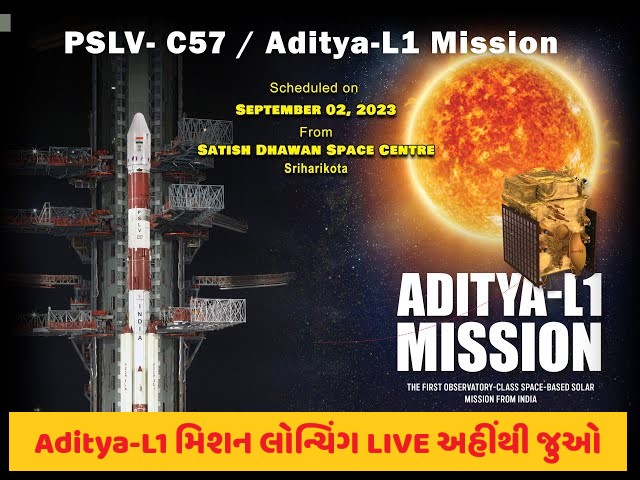Aditya-L1: In the vast expanse of our solar system, the Sun reigns supreme as the ultimate source of energy and life. Understanding this celestial giant has always been a significant goal for astronomers and space agencies worldwide. India, known for its growing space exploration capabilities, has embarked on a remarkable mission called Aditya-L1, dedicated to studying the Sun and unlocking its secrets. In this blog post, we will delve into the details of Aditya-L1, its objectives, instruments, and the potential impact of this ambitious mission on solar science.
Contents
What is Aditya-L1?
Aditya-L1 is a mission led by the Indian Space Research Organisation (ISRO) that aims to study the Sun. Its name, “Aditya,” means “Sun” in Sanskrit, and “L1” refers to the Lagrange point L1, which is a stable point in space located between the Earth and the Sun. This unique position allows Aditya-L1 to constantly observe the Sun without being affected by Earth’s atmosphere or gravitational interference.
Mission Objectives
The primary objectives of the Aditya-L1 mission are:
Solar Corona Study: The mission aims to understand the dynamic behavior of the Sun’s outermost layer, the corona. The corona is of particular interest as it plays a vital role in solar activity and space weather phenomena, including solar flares and coronal mass ejections (CMEs). These solar events can impact Earth’s space environment and technology, making it crucial to comprehend their origins and behavior.
Magnetic Field Measurements: Aditya-L1 will measure the Sun’s magnetic field with high precision. Magnetic fields are fundamental to the Sun’s activity and are responsible for the formation of sunspots, solar flares, and CMEs. By studying these magnetic fields, scientists hope to gain insights into the Sun’s internal processes and magnetic dynamics.
Studying Solar Wind: The mission will investigate the solar wind, a stream of charged particles continuously emanating from the Sun. Understanding the solar wind’s properties and variations is crucial for comprehending space weather and its effects on Earth’s magnetosphere.
Helioseismology: Aditya-L1 will also engage in helioseismology, the study of solar oscillations or “sunquakes.” These oscillations can provide information about the Sun’s internal structure, helping scientists probe its composition and properties.

Instruments on Aditya-L1
To achieve its scientific goals, Aditya-L1 carries a suite of advanced instruments, including:
Visible Emission Line Coronagraph (VELC): VELC will observe the solar corona in visible light, allowing scientists to study its dynamics, temperature, and density variations.
Solar Ultraviolet Imaging Telescope (SUIT): SUIT will capture high-resolution images of the Sun’s chromosphere and corona in the ultraviolet spectrum.
Aditya Solar Wind Particle Experiment (ASPEX): ASPEX will measure the properties of solar wind particles to understand their composition and energy distribution.
Plasma Analyser Package for Aditya (PAPA): PAPA will analyze the composition, energy, and charge state of ions in the solar wind.
Impact and Importance
Aditya-L1 is a significant milestone for India’s space exploration efforts, showcasing the nation’s growing expertise in space science and technology. Moreover, the mission has the potential to contribute to the global understanding of solar physics and space weather.
By gaining insights into the Sun’s behavior, Aditya-L1 can aid in predicting space weather events that can affect communication, navigation systems, and even power grids on Earth. It will also help scientists unravel the mysteries of the Sun’s magnetic field, its impact on Earth’s climate, and its role in the broader context of astrophysics.
Important Links:
💥 Aditya-L1 લોન્ચિંગ LIVE ISRO Official 🎥 અહીંથી જુઓ
💥 Aditya-L1 લોન્ચિંગ LIVE Doordarshan National 🎥 અહીંથી જુઓ
AdityaL1 Mission Brochure PDF Download
‘મિશન Aditya-L1’ ના લોન્ચિંગથી લઇને લેન્ડિંગ સુધીની માહિતી
Aditya-L1 Conclusion
Aditya-L1 represents India’s dedication to space research and its commitment to expanding our knowledge of the Sun and its impact on our planet. As the mission progresses and scientists analyze its data, we can expect to see new discoveries that deepen our understanding of our solar system’s most influential celestial body. Aditya-L1 truly stands as a shining example of international collaboration and scientific exploration in the quest to unlock the Sun’s secrets.

Leave a Reply